The press is an enigma.
Everyone wants to be featured (free traffic? hell yeah!) but how do you get the big media outlets to pay attention to you?
It turns out that there’s a very simple strategy that any website, entrepreneur, or team launching a product can employ.
I’ll let Jordan Bishop from How I Travel explain.
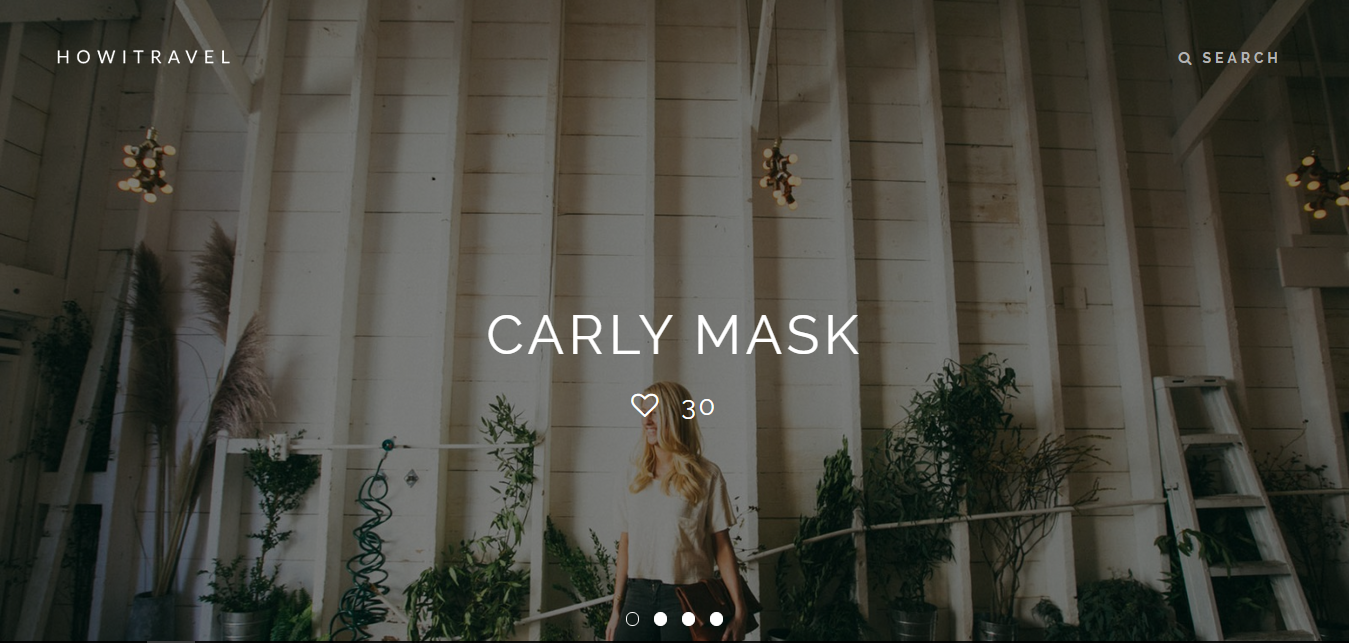
The day had finally come. My newest secret project, which I’d been working on for the past several months, was ready to go. All that I needed to do was get my brand new publication, How I Travel, in front of the world.
Luckily, getting press coverage doesn’t need to be difficult.
If you follow a few simple steps, the steps I’m about to explain in detail, then you’ll never have a problem getting press and building an initial audience again.
These are the exact steps I followed to get 6,281 pageviews, which led to 239 email subscribers, in the first 96 hours of How I Travel’s launch.
Here’s what we’re going to cover in this post:
- The dead-simple method I used to get tons of press coverage and drive thousands of unique visitors to my site within 96 hours of launching with no existing audience (and how you can do the same)
- The two tools I use to convert those unique visitors into the long-term customers you need to build a sustainable business.
Let’s get started.
How to get press coverage for your brand new site
You want to drum up media attention for your new site, huh? I did too. So I took a big step back and decided to learn how the press industry works from the ground up.
This is what got me featured in everything from Business Insider to FOX News while hardly lifting a finger.
But before I tell you the two secrets to getting the media to cover you, let’s start with a high-level overview of how journalism works today (trust me, this is important to understand).
How the Press Works
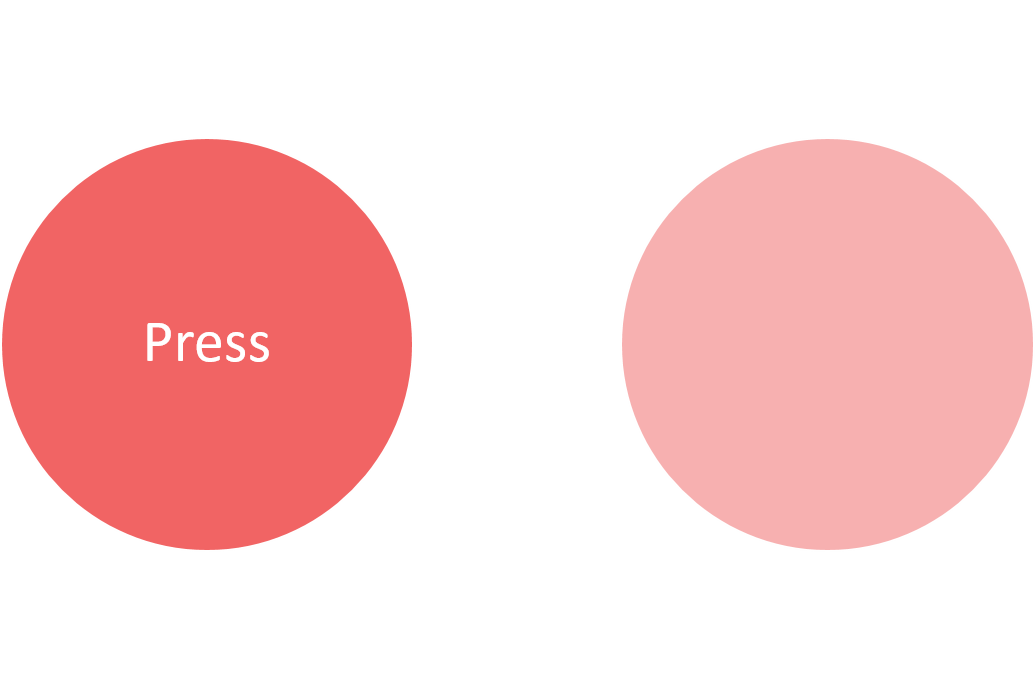
Most press outlets on the web make money from ads, which means that they want to optimize their content to get a lot of pageviews. Writers at most press outlets are stretched thin, which means they’re forced to find effective methods of writing many stories that are going to drive a lot of traffic in a limited amount of time.
These two colliding forces — a need for compelling content and a lack of time to find it — mean press outlets are constantly trying to answer the question: What’s the best way to find content that will attract and engage a lot of people?
Their answer: signaling. They look to other sources — primarily social media and smaller press outlets — to discover the stories that people want to hear about.
Journalists find a story that a small niche of people are starting to talk about, extrapolate its trajectory onto a larger number of people, and decide whether they want to run the story or not.
As an entrepreneur, what does this mean for you? It means that if you want to land yourself some media attention, you need to give the media social proof of why your story is a winner.
You need to hand them exactly what they want — a surefire winner of a story — on a silver platter.
But you’ll never attract the press as your first move. Someone needs to come first…
Enter the Influencers
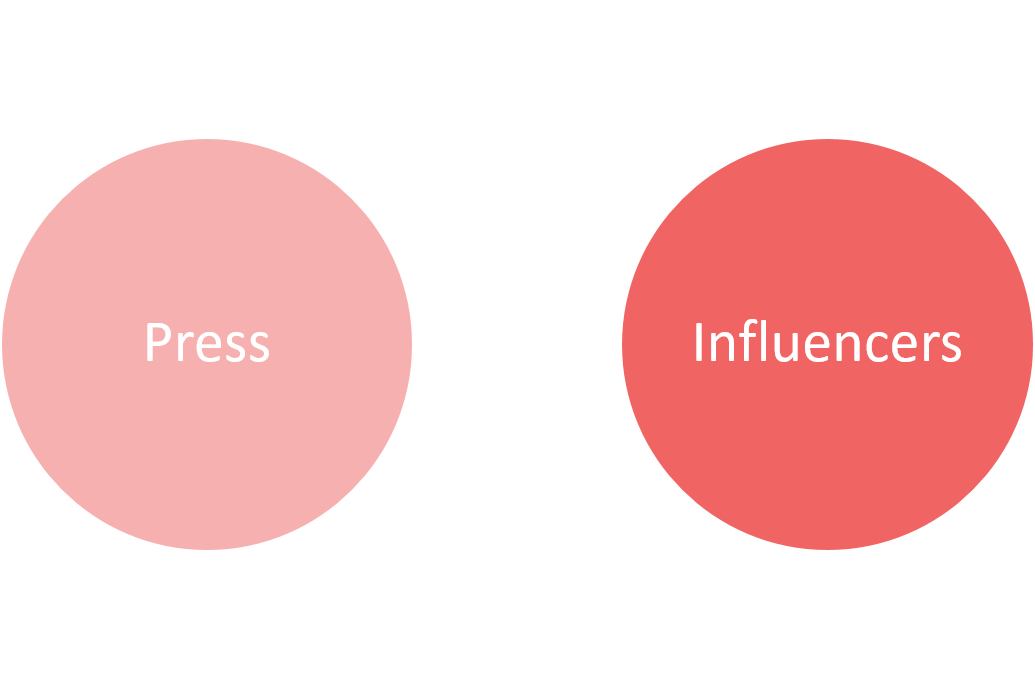
How I Travel profiles the world’s most interesting travelers, so a few days before we launched, I solicited feedback from a few friends of mine who have lived in more than three countries this year and who post a lot of travel-related content to social media. They are my influencers.
Not only did I know that they would be receptive to my new site, I also knew that their audiences were people who view them as a travel authority. That’s much more important than someone with an audience ten times larger who has no affiliation with travel.
But it’s not as simple as just asking some friends to share your new project. The key here is to make your influencers feel special.
Instead of just asking them to share my project on launch day (which is spammy and gross), I asked them to help me improve it before the launch using their knowledge as a travel expert.
Think of the difference in how the person would interpret these two requests:
Hey, I know you’ve got a big travel audience that I’d like to take advantage of, will you post my new site to Facebook and Twitter?
vs.
Hey, I know you’re super knowledgeable about travel, can I pick your brain for a few minutes to see how your expertise can help improve my business?
In the first case, I’m ignoring the individual entirely and just asking for a share. In the other, I’m placing them in the spotlight and giving them a small piece of ownership of my new project.
If you’re really dedicated, you can also keep the nature (but not the existence) of your project a secret from the world up until the moment you launch through Facebook posts like this one.
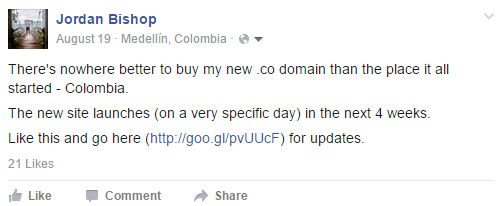
Why? Because when you share the secret with your influencers before your launch, they’ll feel even more special than they would have if you just asked for their opinion.
Then your request turns into this:
”Hey, I know you’re super knowledgeable about travel, and you might’ve seen that I’m launching something in that space in a couple of days. I haven’t told anyone else what the business is yet, but can I share it with you and pick your brain for a few minutes to see how your expertise can help me to improve it?”
That’s even more compelling. Regardless of how close to this person you are, it’s baked into our human DNA to be curious about secrets, which is why this request performs so well.
I’ve used a variant of this to attract hundreds of press mentions and hundreds of thousands of unique visitors for my last three businesses on launch day alone.
So we’ve now solved the first half of the equation, how to make people feel special, since relevant people who feel special are inclined to share your project with their relevant audience.
But where does the press come in? It turns out there are two ways to reach them: either (a) they find you through some other channel (usually social media) or (b) you reach out directly to them.
Since a is largely out of your control, we’re going to focus on b.
How to Attract the Press with Your Influences
Remember what we said earlier about the press needing to see results before they cover your story? Well luckily, now that you’ve made your influencer group feel super special, Twitter will have at least a few mentions about your new site.
Now you can engage the Silver-Platter Strategy.
The Silver-Platter Strategy is when you approach relevant press outlets (the more niche their audience is, the better) to point them to your site and the buzz it’s creating on social media.
All you have to do is say something like this:
”Hey, I just want to introduce How I Travel, a brand new publication that showcases the world’s most interesting travelers. We just launched this morning and we’ve already had XXXX unique views, and as you can see from the tweets below, people are pretty excited about it. I’ve written a sample piece below with some more info about the site, which should cover 90% of what your readers are interested in. Are you interested in writing about us?”
Then I include some tweets like these ones:
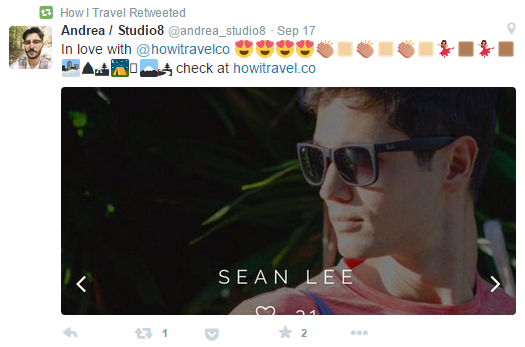

Think about this from a journalist’s perspective. You’re overworked, you’re stressed about deadlines, you’re four cups of coffee past the recommended daily max, then someone sends you this email. And when you start looking into the story, you see that they’re right: the site looks great and a lot of people are talking about it.
Messages like these are heaven-on-earth for writers.
This is why Silver-Platter Mode works so well. Make someone’s job 10x easier, and they’re going to respond in the way that you want them to: by writing about your project.
A perfect example of this for How I Travel is the timing of when we got our first major feature.
On launch day, we submitted How I Travel to Product Hunt before any of our influencers had even shared it out yet, thinking that getting featured on Product Hunt would be a great way to kickstart some traffic.
But Product Hunt didn’t feature us. Not yet, anyway.
A few hours later, after our influencers had shared the site and it started popping up more and more frequently on Facebook and Twitter, I sent a simple tweet to Product Hunt asking them to check us out again.
Within an hour, they had featured us and we went on to become one of the top ten posts that day. Why did they feature us? Because we gave them the social proof they needed to be sure that the project was a good one.
Product Hunt sent us hundreds of new readers on the very first day, and has continued to send new people every day since (1,033 readers in total as of this writing).
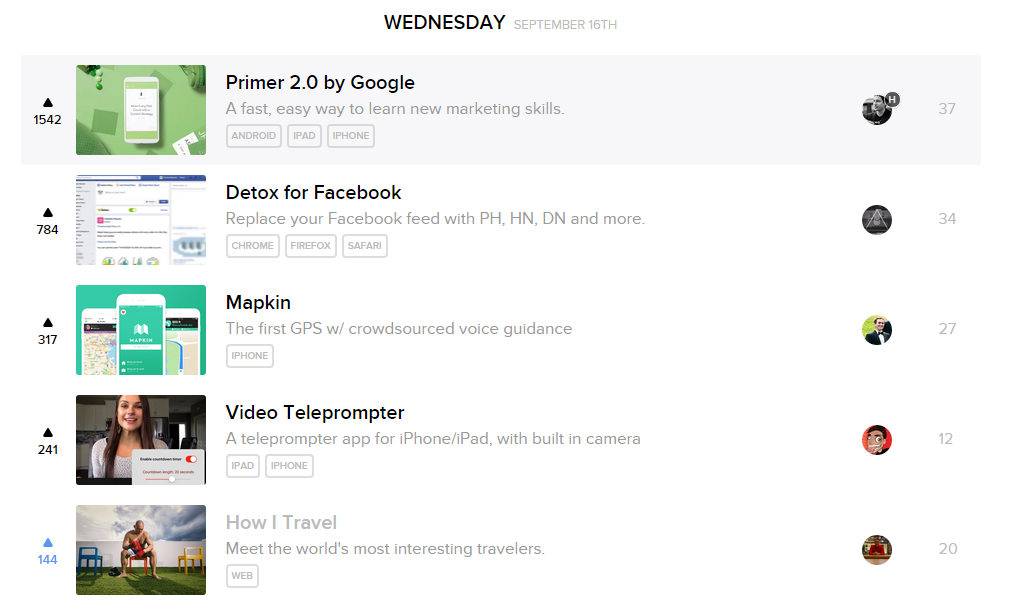
If you want someone to do something for you, hand it to them on a silver platter.
Here’s the best part about getting media attention: once the first piece of media is released, every subsequent piece becomes much, much easier to attain.
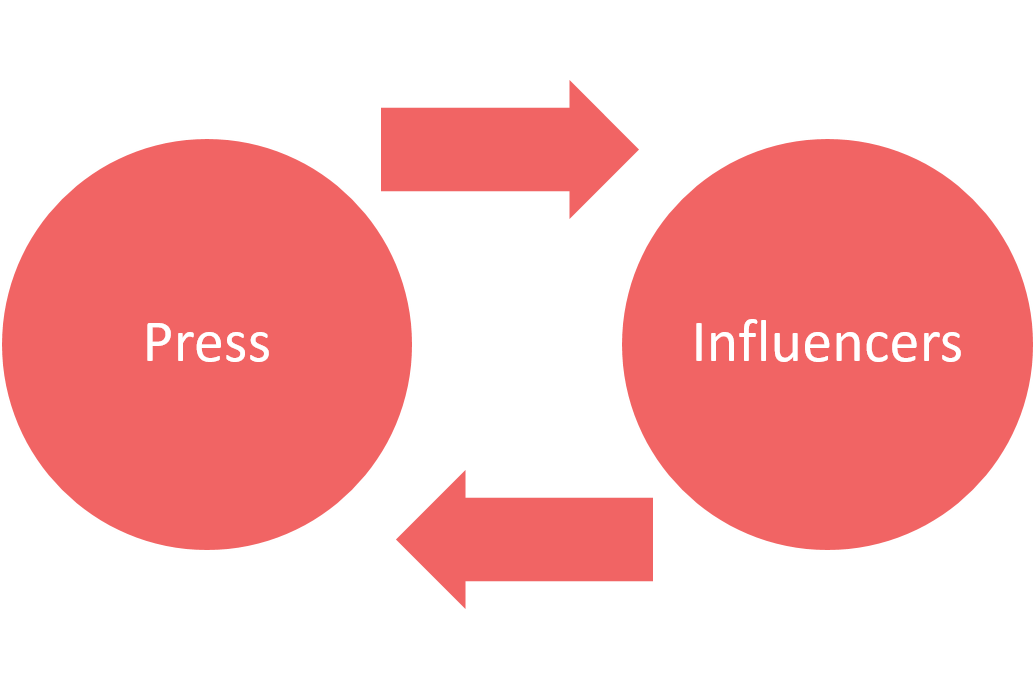
Each subsequent influencer or media piece continues the beautiful cycle of people sharing your site leading to press coverage leading to more people sharing your site and so on.
But remember that this cycle only happens one way: you must begin with influencers. They’re the trigger that allows the press to consider you as a real story.
And if you’re still not convinced and think that all of this was just luck, consider this feature in Business Insider that drove 2,000 page views.
And this video from FOX News that drove 500 page views for a crowdfunding campaign I was running.
And this feature in VanCityBuzz that drove 5,000 page views for my flights startup Yore Oyster.
These features happened months apart for completely unrelated projects; the only common thread was that I followed the above process in achieving the press.
So there you have it: if you want to get a lot of attention on launch day, make your influencers feel really special and then hand the press your winning story on a silver platter.
Converting first-time visitors into long-term followers
Everything that we’ve talked about until this point has been about how to get people to your site, but that’s only beneficial to you if you can actually do something with them once they’re there.
Imagine How I Travel, your business, or any other business as a funnel. At the top of the funnel, there’s a big mess of disorganized people doing a thousand different things on the web.
Sure, they’re on your site (that’s how they got tossed into the funnel), but they’re also surfing on Facebook, swiping on Tinder, and chuckling at 22 Cat GIFs You Must Watch Now on Buzzfeed.
At the bottom of the funnel, you’ve got focused people. They’re focused because you’ve been successful at harnessing their attention for long enough that you can now call them a customer.
If you’re really good, you can get a bunch of the disorganized people at the top of the funnel to make their way to the bottom of the funnel. But if you’re not, you’ve got a funnel that has a top like an ocean and a bottom like a syringe.
How do you move people effectively through your customer funnel?
Just like with sharing content, you want to make it as easy and natural as possible for people to move down the funnel.
So I use Welcome Mat and List Builder from Sumo.
I set them both up the day before we launched, and collected hundreds of email addresses from interested readers in the first 96 hours that I never would have collected otherwise.
Here’s what my Welcome Mat looked like:
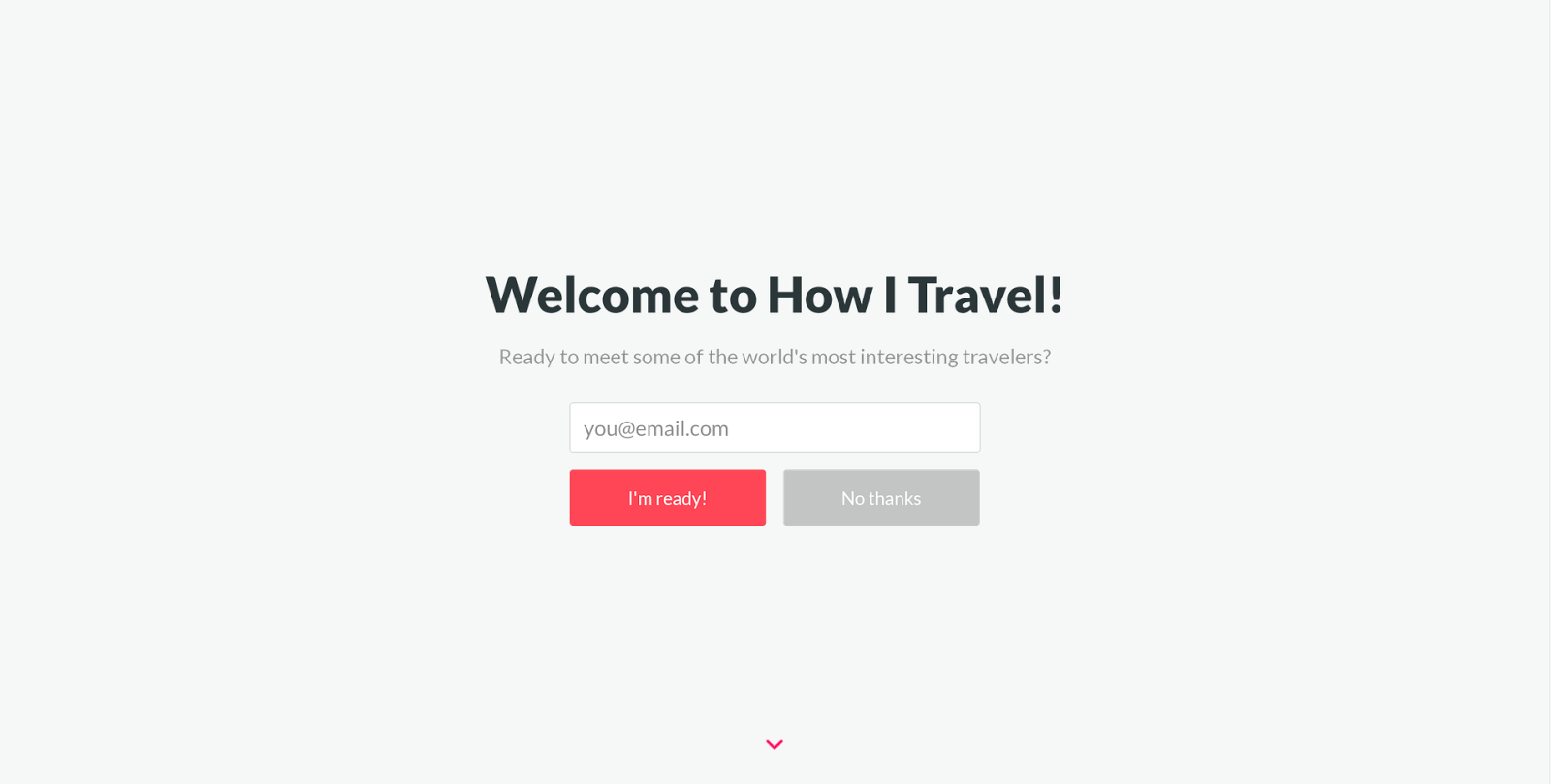
And my List Builder:

Here’s a look at my Welcome Mat dashboard:

These conversion rates are great, and they improved over time as I tweaked my Welcome Mat in response to how people were reacting.
I captured 179 email addresses from Welcome Mat in the first 4 days of How I Travel.
But Welcome Mat doesn’t catch everybody, so that’s why I supplement it with List Builder.
My conversion rates here aren’t as good as they are with Welcome Mat – I only captured 22 email addresses in the first 4 days with List Builder – but I’m still capturing emails every day that I wouldn’t have had otherwise.
And for a publication that’s trying to reach as many travelers and prospective travelers as possible, growing my email list is really important to me.
So there you have it! When you add in the additional 38 email addresses I captured using the email signup prompt in the footer, ?that’s how I got 239 email subscribers (and counting!) in How I Travel’s first 96 hours with no existing audience.
Your Own Launch
Ready to plan your own launch? These are the steps to follow based on this post.
- Find Your Influencers. Identify people in your industry who would be ideal to share your new site.
- Build Rapport with Influencers. Invite your influencers to review an early version of what you’re working on in order to get feedback along with more investment from them.
- Launch, and Ask For Shares. Launch your product, and ask your influencers to share it on their social media accounts.
- Reach Out. With some validation out in the world from your influencer, reach out to reporters at media outlets you want to be featured in and include links to your influencers’ shares.
- Capture Those Leads. Make sure you have Welcome Mat and List Builder installed on your site so that you can convert those new visitors you’ll get from all your press traffic into email subscribers!
Have other ideas or things that have worked for you with getting press? Let us know on Twitter @SumoMe!








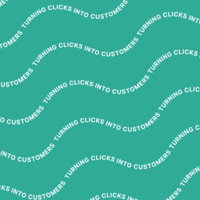

Add A Comment
VIEW THE COMMENTS